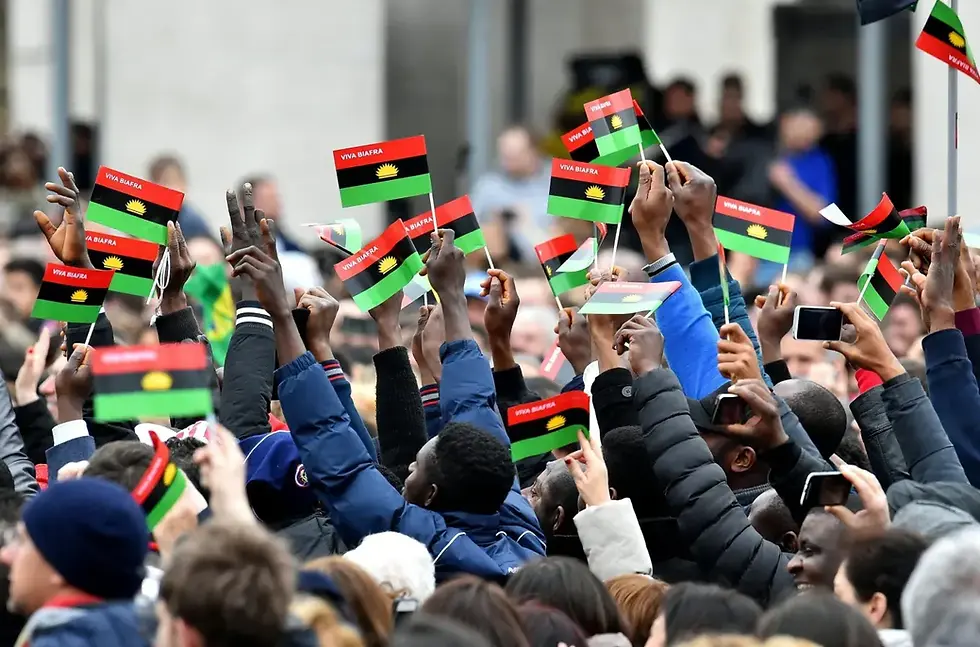The Berlin Conference at a Glance
- The Diaspora Project

- Oct 6
- 4 min read
Who decided the modern-day borders of Africa?

"Colonialism is the practice of extending and maintaining political, social, economic, and cultural domination over a territory and its people by another people in pursuit of interests defined in an often distant metropole, who also claim superiority"- Richard Lachmann
What Went Down?
What is the significance of this meeting? Well, this meeting is where colonial powers put the African continent on the butcher block, and decided who got the choice cuts. In essence, this meeting is where they took the knife to slice up the African pie.
The year was 1884, the scramble for power and dominance among European powers had been simmering for 4 centuries, but was reaching a ferocious boil by the mid 19th century. Disagreements around trade areas and control of strategic waterways, particularly the Suez canal, Congo river and Niger river, had been the topic of dissent for many decades.
A particularly key player, King Leopold II, the then King of Belgium, had been exerting his dominance over the Congo river and estuary, which was of the disdain of Portugal, who was trying to gain control as a route for slave exportation to Brazil and other parts of South America. This formed the backdrop for this meeting, where European leaders wanted to divvy up the continent for their own benefit.

Who was there?
Chaired by Germany's chancellor, Otto von Bismarck, the Berlin Conference was attended by the representatives of 14 different nations/states:
-Austria-Hungary
-Belgium
-Denmark
-France
-Germany
-Great Britain
-Italy
-The Netherlands
- Portugal
-Russia
-Spain
-Sweden-Norway
-the Ottoman Empire
-United States of America.
The desire for industrial expansion was common throughout these nations, and competition between countries fueled the desire to conquer and expand into new territories, to further exert economic and political power and dominance.

The Berlin Conference, November 1884 to February 1885, Germany. © Getty Images
Crucially, the absence of a certain group at this meeting can not be ignored: Africans. There were no African representatives at this meeting whatsoever. None. Is that surprising once we consider the events that ensued?
Who got what?
The Map below outlines the colonised territories in Africa following the Berlin Conference.

What happened next?
There were 6 main outcomes from the Berlin Conference:
Abolition of the Slave Trade:
The attending nations who signed the agreement agreed to work to end the international slave trade.
Freedom of Navigation:
Two very strategic waterways, the Congo and Niger rivers, were declared free for shipping and navigation by all signatory nations.
Free Trade Zone:
Free trade was guaranteed within the Congo Basin and in the region east of the Congo Basin up to Lake Malawi.
Principle of Effective Occupation:
This principle required European powers to demonstrate actual, effective control over claimed territories, rather than just making a symbolic claim, to gain recognition.
Notification of New Claims:
Any power wishing to establish a new claim on any part of the African coast had to notify the other signatory powers.
Congo Free State:
The conference officially recognized the Congo Free State, and everyone who resided there, as the private personal property of King Leopold II of Belgium.
Following on from the conference, the speed and intensity of European colonialism in Africa increased, as nations grappled for significance and dominance in the region.
Modern Significance
To understand present-day border issues in Africa, you must understand and appreciate where they stemmed from. The modern day borders we see across the continent are heavily influenced by the outcome of this meeting, and the resulting actions in the years following.
This is particularly significant when considering how the land was divided. This remote conference disfigured the continent, slicing through communities and nations, putting borders where there had never been any before, and sticking people groups together that had never operated as a unified people before.
In the decades that followed the independence of many African nations, civil war broke out across nations, and separatism and secession became a common sight, as Africans were fighting to form identity from the rubble of imperialism. Common secessionist movements include the state of Biafra, which separated from Nigeria from 1967 to 1970, but was ultimately reintegrated into Nigeria after the Nigerian civil war.

Supporters waving the flag of Biafra, which exsited from 1967-1970
Ambazonia, which declared independence from Cameroon, due to tensions between anglophone and francophone population in the country, and brutality towards the anglophone minority in the nation.

Image outlines territory associated with the proposed state of Ambazonia.
Another example is the conflict between Somalia and Somaliland, and the recent recognition of South Sudan as a separate nation, separating from Sudan.

Man is seen waving the flag of Somaliland.
Julius Nyerere, Tanzania's first president articulated the sentiment in this way:
“We have artificial ‘nations’ carved out at the Berlin Conference in 1884, and today we are struggling to build these nations into stable units of human society … We are in danger of becoming the most Balkanised continent of the world.”
Where do we go from here?
Unity and progress can often feel out of reach for African states, but with understanding of the past brings clarity about the future. Though federation of African states was not achieved, we can still embody the spirit of Pan-Africanism, with greater collaboration, trade, movement of people and processing of natural resources. Unity for Africa can be achieved, but it must be a sustained, international effort between African states.
References:
.png)



Comments